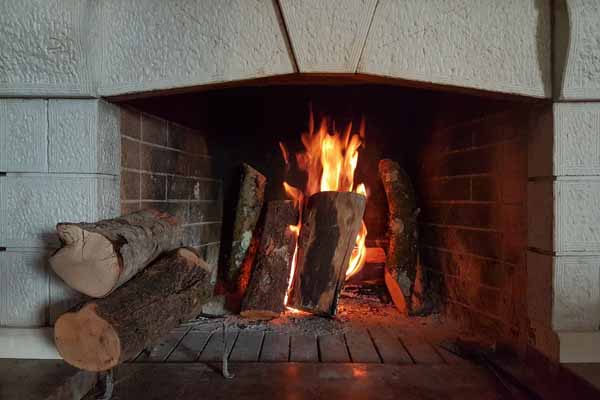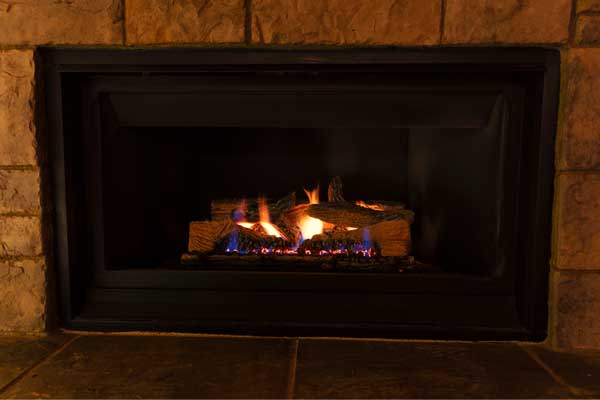Which Is More Efficient, A Fireplace Or Furnace?

Is your home ready for the winter? The temperatures have dropped gradually in the last month or so. Since January is here, you may see snow all over driveways and streets. This cold and snowy weather may force you to relax indoors and work from home because you will want to avoid going outside. Therefore, you will need a heating source to keep you and your family warm without emptying your pockets. Some homes have furnaces and fireplaces, and both have varying beneficial features as well as disadvantages. People typically question whether furnaces are more efficient than fireplaces. This article compares fireplace vs furnace efficiency while weighing all relevant factors.
Fireplace Vs. Furnace: Which Is More Efficient?
Contents
The first criterion that people consider when choosing a heating system is energy efficiency. We have to be aware of energy costs because they are soaring globally. Therefore, you need a heating system that will be cost-effective and will keep your family comfortable. Otherwise, you will face challenges in keeping your home warm.
High-efficiency equipment benefits you and your household because of lower carbon emissions. If you are concerned about protecting the environment, look at efficiency ratings. Some systems have far more benefits than others, and some are close in comparison with negligible differences. These differences will help you to consider other factors when selecting your heating system.
Wood Fireplaces: Inefficient but Pleasing to the Eye

Fireplaces are a classic staple for many homeowners because people have relied on firewood for eons. Firewood is easy to work with: chop the wood, put it in the fireplace, and get the fire started. Smoke will rise through the chimney, and heat and light will spread through your home. People enjoy looking at the flames as they burn and dance, almost putting them in a trance. Fireplaces present a beautiful backdrop for social activities or just relaxing with your family on a snowy winter night while drinking a warm cup of hot chocolate. However, choosing a fireplace because it is aesthetically pleasing is not wise.
Unfortunately, wood fireplaces are inefficient. Just 25% of the heat from your fireplace stays inside your house because the remaining heat follows the smoke outside. In some instances, you can lose up to 90% of the heat produced by your fireplace. We also recognize that firewood is costly, so imagine spending so much on the wood but getting little or no heat. If you pay attention to your budget, you should look for more efficient and cost-saving solutions. Great aesthetics inside your home can never compensate for inefficiency, especially when you have better choices.
Safety is another factor to consider when selecting a wood-fired fireplace because you can never leave it unattended. If you have to step away from the house or if you’re going to sleep, you need to douse the flames. You do not want a situation where you are not there to stop a fire. While the risk may be low, a fire could harm someone and cause extensive damage. Therefore, do not ignore the safety aspect. Also, consider the impact of the fireplace on your indoor air quality. Smoke does rise through the chimney, but you may also have remnants of carbon monoxide, carbon dioxide, ash, and VOCs circulating in the home.
Related Article: 3 Reasons Your Furnace Is Rusting
Gas Fireplaces: Slight Improvement but Not as Efficient

If you want the visual appeal of a traditional fireplace but do not want the stress of dealing with wood, choose a gas-powered unit. You will have no challenges with burning wood or impurities affecting the air quality in the home. Also, you will not have to be concerned as much about safety. Gas fireplaces are convenient because you will have a dedicated fuel supply to keep the place warm. While you would not have the nostalgic experience of crackling wood, you will benefit from energy efficiency while enjoying a warm home which seems to be a fair trade-off.
Based on the Annual Fuel Efficiency ratio (AFUE), gas fireplaces measure around 70% compared to wood fireplaces with a 10% to 25% efficiency rating. Therefore, you can experience more benefits by changing the fuel source. You will have more money to spend, but this is still not the best option. A gas furnace measures around 80% to 98%, depending on the model. A furnace is more valuable for you and your family once you choose the right equipment.
A gas fireplace is still a fireplace designed to heat the surrounding area. Therefore, you can heat one room, such as your living room, for your family to relax. A gas fireplace could also suffice if you have a small cottage, studio, or shed. A gas fireplace is an ineffective option for heating a family house with several rooms and floors. The best solution for heating the entire building is a gas furnace.
Related Article: Why You Should Call A Professional For Your Furnace Repair
Furnace: The Number One Option
Modern furnaces are built as versatile heating systems available in different sizes to meet the needs of any home. These systems rely on ductwork to transport hot air to the various spaces within your house – the ideal whole-house heating solution. While you may not have the aesthetics of a glowing fireplace, you will have guaranteed warmth through the winter. Your family can walk around the house comfortably and sleep without a worry in their bedrooms.
High-efficiency units will improve your energy efficiency rating by almost 98%. Therefore, you can enjoy decreased fuel use which leads to savings on your monthly heating expenses. When you compare this to the alternatives, there are far more benefits. You may be able to afford to have your system on throughout the winter if needed. While you may have higher installation costs, you will save on fuel in the future, making it a great return on your investment.
Conclusion
Sensible homeowners do not focus on design and aesthetics only. They think about energy efficiency when deciding between a furnace and a fireplace. This decision will impact the amount of money you spend on energy and, of course, your carbon footprint. If we look at the factors, furnaces will always top fireplaces. Furnaces provide improved air quality and safety and are convenient to use. You must employ the services of a reputable and reliable contractor to consult on the scientific load calculation and the best plan for installation. By using experienced technicians from the onset, you are ensuring warm and comfortable winters for many years.
Related Article: Top 5 Reasons To Have An Annual Furnace Tune-Up
Call Townsend Energy for Your HVAC Requirements
 Townsend Energy provides the best cooling and heating services in northeastern Massachusetts, southern New Hampshire, and Maine. We employ top-rated expert technicians who can facilitate your HVAC needs, including replacements, tune-ups, repairs, and installations. Every technician is knowledgeable and experienced in handling your HVAC system efficiently.
Townsend Energy provides the best cooling and heating services in northeastern Massachusetts, southern New Hampshire, and Maine. We employ top-rated expert technicians who can facilitate your HVAC needs, including replacements, tune-ups, repairs, and installations. Every technician is knowledgeable and experienced in handling your HVAC system efficiently.
Townsend Energy provides competitive cooling and heating service prices in your area. Our maintenance team will enhance your energy efficiency and comfort while ensuring that you save on your home cooling and heating expenses. If you need to repair or replace your current system, we offer recommendations that will not exceed your budget. We guarantee all work because your satisfaction is our number one goal. If you need to schedule a service appointment, call Townsend Energy today because we provide in-home estimates at no cost.
Contact us now at (800) 722-4101 to find out more! Click the link to view our service area.
